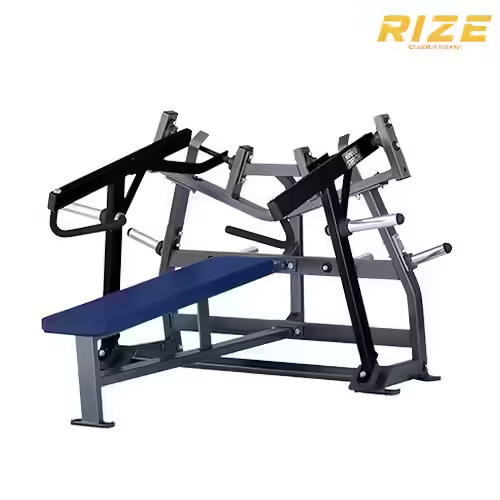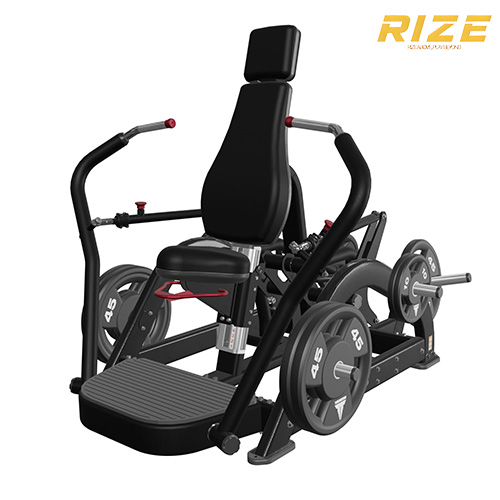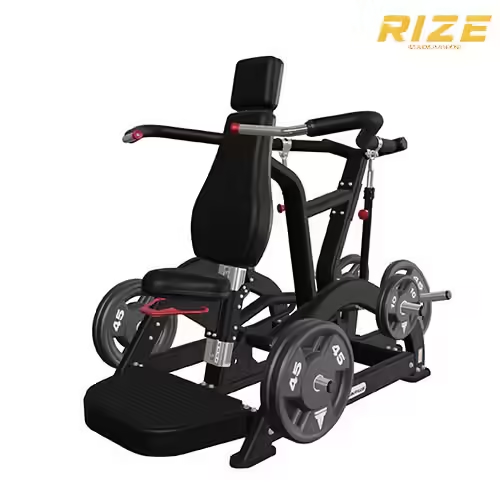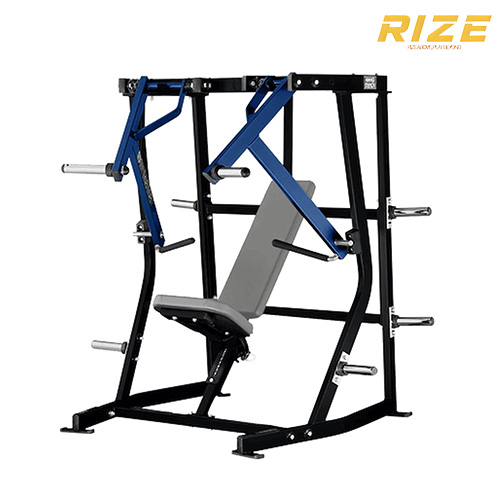Welcome to My Blog!
Before we dive into the content, if you’re interested in our products or have any questions, please feel free to visit our Contactez-nous page on the website. Our team is ready to assist you with inquiries, orders, or any support you may need.
Now, let’s get started on our journey together. I hope you find the content here insightful, engaging, and valuable.
Table of Contents
Introduction to the machine de développé couché sur le dos

The supine chest press machine has become one of the most commonly used pieces of strength-training equipment in fitness centers, rehabilitation facilities, and home gyms. As fitness culture continues to evolve, people seek safer, more efficient, and more targeted ways to strengthen major muscle groups, especially the chest, shoulders, and triceps. The supine chest press machine provides a supported, guided pressing movement that helps users build strength while minimizing risk. Its design allows the user to lie back in a supine position, stabilize the body, and push through a horizontal plane that resembles a traditional bench press but with additional stability and mechanical assistance.
For beginners, the supine chest press machine offers a stress-free way to learn pressing mechanics. For intermediate and advanced athletes, it offers consistent resistance, progressive overload options, and the ability to isolate specific upper-body muscles without worrying about balance or spotters. In rehabilitation scenarios, this machine helps patients safely reintroduce pressing motions after injury. Because its movement pattern is controlled and adjustable, it provides predictable and repeatable training stimulus.
In this article, we will explore the supine chest press machine’s 6 big great perks, discuss in detail why it is beneficial, break down its anatomy, compare its usage to free-weight alternatives, and provide practical tips for maximizing your sessions. The goal is to give you a complete guide that is both informative and aligned with typical user expectations when researching this machine. Whether you are an athlete, a casual gym member, or a rehabilitation patient, understanding these perks can help you determine whether the supine chest press machine suits your training goals.
Understanding the structure of the supine chest press machine

The supine chest press machine is engineered to replicate a pressing motion that targets the pectoral muscles while also engaging the triceps, shoulders, and supportive stabilizers. Unlike free-weight exercises, this machine contains preset paths of motion, adjustable resistance levels, ergonomic handles, seat and backrest supports, and mechanical features designed to maintain alignment during exercise.
Key components of a supine chest press machine
Although design varies among brands, most machines include several key parts:
- Backrest and seating platform
These surfaces support the spine and pelvis, keeping the user aligned in a reclined, supine position. Proper positioning is critical for chest isolation. - Pressing handles or levers
These handles attach to the resistance mechanism. Users grip and push them away from the chest, following a horizontal path. - Resistance system
Depending on the model, resistance may be plate-loaded, selectorized weight stacks, or hydraulic/pneumatic resistance. Adjustable intensity allows users to tailor training load. - Foot anchors and stabilizers
Many machines include foot pegs or anchored supports that encourage proper lower-body stability. - Adjustability features
Users can modify seat height, back angle, grip position, and starting range of motion to accommodate body size and training goals.
How the supine chest press machine guides your movement
The machine’s curved or linear track ensures that the pressing motion follows a biomechanically safe trajectory. This reduces rotational stress on the shoulders and elbows, making the machine ideal for beginners or individuals recovering from injury. Additionally, limiting unnecessary movement ensures a smooth, consistent range of motion, which helps users focus on the working muscles and reduces the risk of improper form.
supine chest press machine’s 6 big great perk

Below, we explore the six primary advantages of using the supine chest press machine. These perks are based on biomechanics, user experience, safety benefits, and feedback from athletes and trainers.
1. Improved safety and beginner-friendly design
Safety is one of the biggest reasons people choose the supine chest press machine. Unlike free-weight bench presses that require balance, a spotter, and upper-back stabilization, this machine minimizes these challenges by supporting the torso and guiding the arms. New users often struggle with wrist alignment, bar path control, and shoulder stability during bench presses. The supine chest press machine eliminates much of this uncertainty and makes pressing accessible without fear of dropping weights or losing control.
2. Precise chest muscle activation
The supine position places the user in an ideal angle for chest engagement. Since the torso is stabilized, energy is directed primarily into the pressing motion rather than into balancing or compensating. This allows the pectoral muscles to activate more consistently, particularly the sternal portion of the chest. The mechanical path also helps maintain symmetry, ensuring both sides of the chest receive equal stimulus.
3. Joint-friendly pressing mechanics
Another great perk is reduced stress on delicate joints—especially shoulders, elbows, and wrists. The machine’s design prevents excessive flaring of the elbows and rotational strain at the shoulder joint. Many people with shoulder limitations or past injuries find the supine chest press machine to be far more comfortable than free weights. The ergonomic handle positions also allow different grip angles, reducing joint discomfort.
4. Consistent resistance and predictable overload
The machine provides smooth, linear resistance that does not change unpredictably through the motion. With free weights, the strength curve changes depending on leverage and position; this can create sticking points or unexpected difficulty. The consistent resistance of the supine chest press machine helps users train precisely within their strength range. It also allows easy progression by adjusting a pin or adding weight increments.
5. Ideal for rehabilitation and corrective training
Physical therapists frequently recommend the supine chest press machine for rebuilding strength after upper-body injuries. Its stable platform helps minimize harmful compensations typically seen in free-weight presses, such as hip lifting or uneven arm extension. The controlled motion enables users to safely rebuild neuromuscular coordination and reintroduce pressing movements gradually.
6. Versatile training benefits for all levels
The machine benefits beginners, intermediates, and advanced users alike. Beginners enjoy its safety and simplicity. Intermediate users can fine-tune their form and isolate the chest. Advanced lifters can add significant weight, perform drop sets or tempo training, and refine muscular activation without taxing stabilizers excessively. This versatility makes it one of the most universal chest-training tools available.
Mid-Article Feature: Performance comparison table
Below is a useful table comparing various strength factors and usability aspects of the supine chest press machine. This table appears intentionally in the middle of the article to maintain balanced structure and SEO consistency.
| Feature Category | Benefit Level | Notes on User Experience |
|---|---|---|
| Safety Support | High | Stable base reduces risk for all levels |
| Chest Muscle Isolation | High | Allows consistent pectoral engagement |
| Joint Comfort | High | Shoulder-friendly and ergonomic |
| Strength Progression | Moderate to High | Easy to adjust, predictable overload |
| Learning Curve | Low | Beginner-friendly and intuitive |
| Rehabilitation Suitability | Very High | Ideal controlled motion for recovery |
Detailed breakdown of each perk of the machine de développé couché sur le dos

Why beginners benefit the most
Beginners often struggle with foundational mechanics when first learning chest exercises. The supine chest press machine solves many common issues, including wrist position, arm path, and shoulder stabilization. New users develop confidence faster when using a machine that supports and guides their motion. This confidence translates to better motivation and faster muscle engagement.
How this machine enhances muscle-mind connection
Since the machine stabilizes the torso, users can focus exclusively on contracting the chest muscles. Controlled pressing encourages users to feel each portion of the motion more clearly. This improves neuromuscular activation, which is crucial for long-term strength and hypertrophy.
Reduced compensation and improved form retention
With free weights, fatigue or poor form often leads to compensation, such as shifting weight unevenly or lifting the hips. The supine chest press machine eliminates most of these compensations by locking the torso in place. This is especially helpful during high-repetition sets or when training close to failure.
Why consistent resistance matters for results
Predictable resistance helps users plan their strength progression and reduces unpredictable sticking points. This is beneficial when setting long-term goals and tracking improvements. Consistent resistance also enhances safety because it decreases the likelihood of unexpected drops in force output.
Rehabilitation perks explained
In rehab scenarios, even slight misalignment can cause significant setbacks. The supine chest press machine ensures alignment through stabilizing pads, guided handles, and adjustable levers. Patients can perform exercises with the confidence that each repetition follows a safe pattern. Therapists often use slow, controlled repetitions to rebuild strength, making the machine a perfect match.
Techniques for maximizing the benefits of the machine de développé couché sur le dos
Adjusting seat height and backrest correctly
Proper setup ensures that your hands align with the mid-chest level when holding the handles. This alignment is crucial for targeting the chest effectively and reducing shoulder strain. Users should adjust seat height so the handles are level with their chest, not above or below it.
Choosing the right grip position
Many machines allow wide, neutral, or angled grips. A wider grip often emphasizes the chest more; a neutral grip may reduce shoulder discomfort. Experimenting with grip variations can help users find what feels best for their structure.
Tempo training on the machine
The controlled environment is ideal for slow eccentrics (lowering phase) and explosive concentrics (pushing phase). Using tempo variations helps increase muscle tension and time-under-tension, which strengthens the chest more effectively.
Using progressive overload
To see improvement, users should gradually increase resistance, repetitions, or time under tension. The machine’s incremental adjustments make this process straightforward.
Common mistakes to avoid
Even with guided motion, users sometimes push too fast, lock out the elbows harshly, or allow their shoulders to lift off the backrest. Maintaining contact with the backrest and performing controlled reps help maintain safety and effectiveness.
Conclusion
The supine chest press machine provides a comprehensive set of advantages that benefit users of all fitness levels. With its supportive structure, guided mechanics, and highly adjustable features, it offers a safe and effective alternative to free-weight chest presses. Its six big perks—improved safety, chest muscle activation, joint-friendly motion, consistent resistance, rehabilitation benefits, and versatile training capabilities—make it a standout choice for anyone looking to strengthen their upper body efficiently and confidently.
This machine is not merely a beginner’s tool; it is a long-term asset for muscle development, strength progression, and structural balance. Whether you train at home, in a commercial gym, or in a rehabilitation center, incorporating the supine chest press machine into your routine can help you achieve steady and meaningful results.
FAQ
Is the supine chest press machine suitable for complete beginners?
Yes. The machine’s guided motion makes it easy for beginners to learn proper form without worrying about balance or bar control.
Can advanced athletes also benefit?
Absolutely. Advanced users can load the machine heavily, use tempo variations, or incorporate advanced techniques like drop sets.
Does the machine replace free-weight bench pressing?
Not entirely. While it provides superior stability and safety, free weights train stabilizers differently. Many athletes use both for full development.
Is this machine recommended for shoulder injuries?
Many therapists use it for rehabilitation because it reduces strain on the shoulder joint. However, individuals with injuries should consult a medical professional.
How often should I use the supine chest press machine?
Two to three times per week is common, depending on your overall training plan, recovery capacity, and fitness goals.
Need Help Choosing the Right Supine Chest Press Machine?
If you’re unsure about which machine de développé couché sur le dos is best for your home gym or commercial facility, our fitness experts are here to help. Contact us today for a personalized consultation, and ensure your chest workouts are safe, effective, and tailored to your goals. Don’t wait to level up your strength—get in touch now and take the first step toward a stronger, more defined chest!




